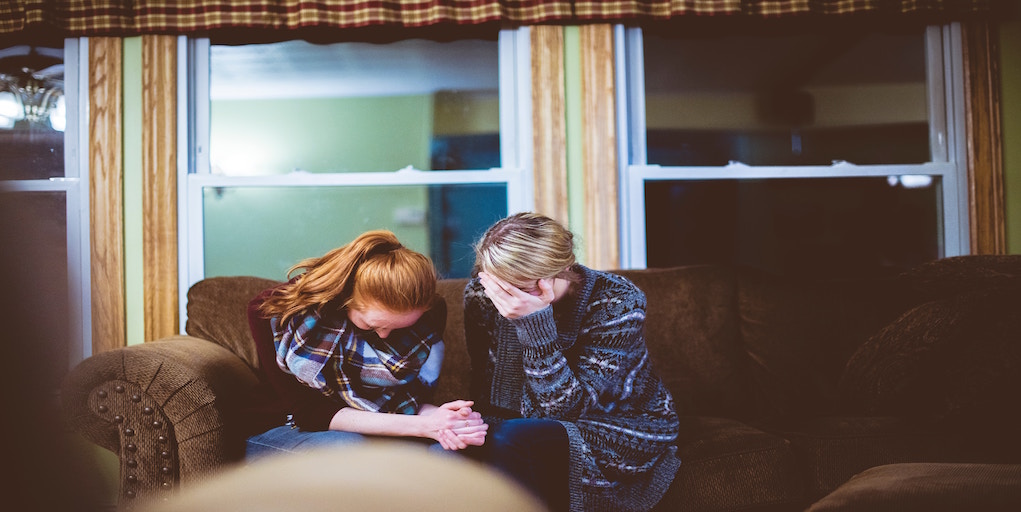Let the journey of self-discovery enrich your life...
For those who have an avoidant attachment style, caring comes at a significant emotional cost.
“It’s always been hard for me to get close to people. I have this wall that goes up. Maybe it’s never completely down. I know it’s frustrated my wife. I’ve been accused of not feeling, of being distant, of not caring, of being afraid of intimacy…it’s just that…well, there’s this wall, it’s always been a part of me.” —Kiefer, age 39
Once you care deeply about someone, there is always the threat of loss. Loss and caring go hand-in-hand. When others become important to us, they have considerable power — power to uplift, power to sway, power to hurt. The emotionally avoidant anticipate that this power will lead to pain. A pain that may arise from clashing agendas, incompatibilities of desire and interest, pain for caring more than the other, a pain that may be reminiscent of earlier relational wounds.

For too many, the road to emotional intimacy is paved with potential danger.
For those of us who have learned to prioritize avoidance strategies, the residue of negative feelings resonates the loudest. Distress; helplessness; being overwhelmed; frustrations that consume; longings that go unfulfilled; shame and humiliation; rejection that immobilizes.
These wounds shape the inner relational blueprint that mobilizes avoidant attachment, a blueprint that makes connecting with others feel risky (Saakvitne, Gamble, Pearlman, Lev, 2000).
Avoidant attachment in a response to the pain of caring
“In order to deal with the loss of my parents when I was nine, I had to stop caring. Once I stopped caring, it didn’t matter what happened to me.” —Bruce, age 53
The story from attachment theory focuses on the plot-line of closeness and distance. To oversimplify in order to make a point, those of us who more often than not received what we needed from our caregivers as children end up feeling comfortable with opening ourselves emotionally to others later in life (the securely attached amongst us). Relationships are a safe harbor, a place to return to again and again in order to be seen and experienced and to emotionally refuel (Mahler, Pine, et al., 2000).
Attachment wounds have the potential to turn our inner security into longstanding states of uncertainty, anxious self-doubt, fears of abandonment, and for some, the need to forego (dismiss) their own attachment needs.
A range of relational failures can leave us prone to mistrust, a suspiciousness about emotional intimacy, a leeriness that drives us to keep others (including our spouse/partner) at arm’s length. Attempts to connect with someone who has an avoidant attachment style may frequently lead to frustration and confusion; the partner of someone with an avoidant attachment style may find that connection is supplanted by remoteness — a reaching for someone who is emotionally unavailable.
It can feel like there is a void in the person who is distant, a remoteness between people that parallels the inner remoteness, an inner disconnect of the person who had to mute his/her desires and emotions.
We remain distant or avoidant of a certain level of closeness in order to shield ourselves from (further) emotional injury. We sever our capacity for empathy and caring in order to wall off our inner world. Here self-imposed loneliness is preferred over the risk of loss.
In these cases, avoidance is a protective maneuver — a pattern of relating which centers around regulating closeness and how much of ourselves we show (or are able to show) to others. This relational stance isn’t necessarily a conscious choice, but rather, one created out of early attachment experiences that shaped us.
How much of the raising and lowering of our protective walls is truly within our control?
It’s not surprising to find that our earliest relational experiences set in motion our internal “working models” (Main, et al., 1985), a mental road-map of what a relationship can offer; these deep-seated relational expectations prime us to experience others in particular ways. Expecting pain or disappointment, we may discount many positive interactions with our spouse/partner only to zero in on a particular painful event that reminds us of the dangers of caring, of opening ourselves to the influence of another.
Our partner’s behavior can set in motion strong feelings in us when his/her behavior is reminiscent of the wounding we endured in childhood. These past-present collisions (the wounds of our past triggered in our current relationship) are often unconscious, occurring rapidly and without full awareness. We may lose perspective in the moment, discounting the circumstances surrounding what happened, feeling convinced that distance is the only viable option to being in a relationship.
Avoidant attachment strategies: Mitigating vulnerability, desire and need
“My preference is to be as self-sufficient as possible. The less I rely on others, the better.” —Kay, age 56
The dependency of childhood and our early reliance on others make us extremely vulnerable; we are shaped by the psychology and relational capacities of those we depend upon at an early age. Attachment traumas/neglect can significantly diminish our capacity to identify, regulate and use our emotional experiences (Stevens, 2014). Our disconnection with our inner life and our struggles with emotions make navigating relationships and intimacy more challenging.
One solution to the dilemma of believing that others cannot meet our needs is to turn against ourselves, to attack or mentally disown the vulnerable parts of ourselves that hunger for emotional closeness. In these instances, a central part of who we are, our need for relatedness, places us at risk — a risk of further wounding at the hands of those we open ourselves up to. This felt-danger is stirred by our need/desire for connection, and to defend against this, we must somehow learn to keep these desires in check.
In order to manage our attachment needs, we may fall back on self-reproach (“You are so weak”; “Don’t be an idiot, you always get hurt”). We bully and shame ourselves into not needing, an ongoing inner battle that intensifies whenever we find ourselves caring for another. Or we may turn the reproach toward our partner, attacking her/him for having the very needs we’ve had to deny within ourselves.
The denial or muting of our attachment needs reduces the emotional impact others can have on us. The less hold our desire for connection has over us, the less someone (even someone important to us) can send us into an emotional tailspin. Here self-sufficiency is prioritized and prized. Yet it’s a defensive self-reliance that may not completely eradicate our desire for contact with others.
The self-fulfilling prophecy of relational disappointment
One possible outcome of distal relating is that it will create a self-fulfilling prophecy.
In short, your cynicism of emotional closeness frustrates others and they end up reacting accordingly to you: they become frustrated/angry, withdrawing, rejecting, etc; but rather than identify how you may have contributed to their pulling away or ending the relationship, you experience their behavior as evidence that others cannot be trusted and you are therefore justified in keeping your emotional distance.
In other words, distance begets distance.
Relationships usually involve patterns of closeness and distance, a movement between the opposing poles of the close-distant continuum. Life circumstances, stress, and particular relationship and personal dynamics all contribute to this intimacy ebb-and-flow. It would be a mistake to think that closeness should be static and remain at the same level across time periods and circumstances.
Too many of us carry our past over into our current relationships. Avoidant attachment is one such carry-over that stems from the pain of earlier relationships. A pain that has, for some, been managed by protective armor. “My wall goes up” is a phrase often repeated by those who find it necessary to protect themselves in this way.
Understanding how these current protective maneuvers might also contribute to the pain we are attempting to avoid can be an important first step in healing the psychic scar tissue of our attachment wounds.
Are you interested in working with Dr. Nicastro?
Rich Nicastro, PhD is a clinical psychologist based in Austin, Texas. Dr. Nicastro has twenty-five years of experience working with individuals and couples, as well as offering psychodynamic supervision/consultation to other therapists.
He offers online individual and couples counseling (telecounseling) for clients throughout the United States.
You can reach Dr. Nicastro at Rich@RichardNicastro.com
Article Citations
Malher, M., Pines, F. (2000). The Psychological Birth Of The Human Infant Symbiosis And Individuation.
Main, M., Kaplan, N., & Cassidy, J. (1985). Security in infancy, childhood and adulthood: A move to the level of representation. In I. Bretherton & E. Waters (Eds.), Growing points of attachment theory and research. Monographs of the Society for Research in Child Development, 50 (1-2, Serial No. 209), 66-104.
Saakvitne, KW, Gamble, S, Pearlman, LA, Lev, BT. Risking Connection: A Training Curriculum for Working With Survivors of Childhood Abuse. 2000.
Stevens, F.L. Affect Regulation Styles in Avoidant and Anxious Attachment. Individual Differences Research, 2014, Vol. 12 (3), pp. 123-130.









